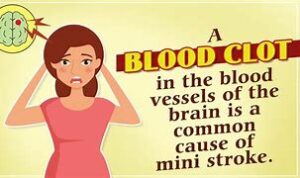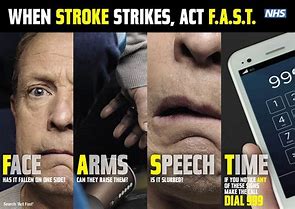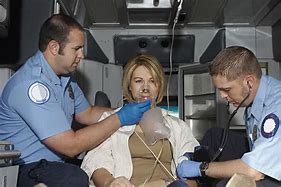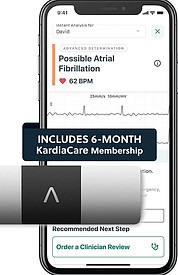
Warning Signs of Stroke with A-Fib you Should Know
Stroke Risk Assessment Tool
Find out how old your heart is
Here’s a free heart health Stroke Risk assessment Tool (through Overlake Hospital) to learn what your actual heart age is compared to your biological age. I took the assessment, and my score is 80 for heart age and I’m only 64. Learn how to minimize your most harmful risk factors. How high is your risk for developing cardiovascular disease? This test will give you a printout of steps to take to improve your heart health.
All you have to do is answer some questions, they may pertain to family history and what conditions you have now or had in the past. Your age is a key factor in this assessment as well as your gender, as women are more susceptible to heart disease than men.
You may find out that heart disease is not hereditary, and it can be a risk at any age. When you’re finished with the assessment, they will give you an atrial fibrillation stroke guideline to follow for better heart health.
Atrial Fibrillation Patient Information
Stroke is The Fourth Leading Cause of Death and the leading cause for Disability in Adults in the United States
A stroke occurs when blood vessels that supply the brain become ruptured or blocked. When blood can’t bring nutrients and oxygen to brain cells, the cells stop functioning and die. Many of the factors that affect the risk of having a stroke are related to lifestyle choices that can be controlled or modified.
LS7, developed by the American Heart Association to track health status, measures compliance with healthy guidelines for 7 modifiable health factors:
Blood glucose, cholesterol, blood pressure, body mass index, physical activity, diet and cigarette smoking. Each of these factors can be categorized into ideal, intermediate or poor levels of compliance.
A high score on the LS7 has been linked to low rates of cardiovascular disease and death.
Each of the 7 health factors was scored as 0, 1, or 2 to represent poor, intermediate or ideal health. For example, current smokers were scored as “poor” for the smoking factor, former smokers who quit within the prior 12 months were scored as “intermediate”.
Those who never smoked or who quit more than 12 months ago were scored as “ideal.” Total scores were categorized as inadequate (0–4), average (5–9) or optimum (10–14) cardiovascular health. Results appeared online on June 6, 2013, in Stroke. (By Carol Torgan, PH.D.)
Atrial Fibrillation Stroke Risk

You’re at higher risk for stroke if you have A-Fib, 5 Times Higher
One-Fourth of all strokes after age 40 are caused by A-Fib, that is IF you aren’t being treated. Blood clots can be treated with blood thinners and studies show that long-term use of the blood thinner warfarin in patients with A-Fib can reduce the risk of stroke by 70 to 80% and that’s really good news.
Atrial Fibrillation can lead to heart failure, a condition in which your heart can’t circulate enough blood to meet your body’s needs. Overtime, A-Fibs irregular, fast heartbeat leads to ineffective pumping of the blood which may weaken the heart. The longer this activity goes on, even treated, the more the heart is weakened and eventually will give up. That’s where we talk about a pacemaker…but that’s another article.
(https://my-heart-health.com).
Warning Signs of Stroke with A-Fib You Should Know
The first sign of stroke
Sudden numbness or weakness in the face, arm, or leg, especially on one side of the body. Sudden confusion, trouble speaking, or difficulty understanding speech. Sudden trouble seeing in one or both eyes. Sudden trouble walking, dizziness, loss of balance, or lack of coordination.
Signs of Acute Stroke
Acute strokes, also known as cerebrovascular accidents, are broadly classified as either ischemic or hemorrhagic. Acute strokes result in loss of blood flow, nutrients and oxygen to a region of the brain, resulting in neuronal damage and subsequent neurological deficits.
The symptoms of acute stroke can be misleading and misinterpreted by clinicians and patients. Rapid acute examination of persons with stroke symptoms can reduce disability and help prevent recurrences.
Symptoms of a mini stroke

TIA-Similar to Transient ischemic Attack, a TIA arises when a region of the nervous system, usually these of brain, suffers a relevant, but temporary, reduction in blood flow, which is sufficient to cause ischemia (restriction of blood and oxygen supply), but insufficient to cause cerebral infarction (death of brain tissue). The patient with TIA has symptoms of stroke only for a short period of time, usually not more than an hour. When the blood flow is restored, the symptoms disappear spontaneously.
Blurry Vision

Vision loss is a sign of a stroke. Vision loss to either the left or right side of the visual field can be symptom of a TIA. More often however, a TIA presents with a type of vision loss not typically for a stroke. Often patients experience vision loss in one eye, first the eye seems to dim as everything is seen through an opal glass pane, then vision is completely lost.
As mentioned, the vision loss is reversible, therefore referred to as “Transient Monocular Blindness” or TMB. There have also been reports of the surrounding appearing to be grey, objects looking blurry, and patients becoming aggravated when exposed to bright light
Atrial Fibrillation Stroke Risk Calculator

Stroke survivors often have problems swallowing, speaking, writing and may experience extreme fatigue.
The F.A.S.T. stroke test only takes a minute and can prevent a lifetime of hardship – or worse
Face– ask the person to smile, if their smile droops on one side, they may have had a stroke.
Arms– Can the patient raise both arms above their head?
Speech– Ask the person to say a simple phrase such as their name and address, listen for slurring.
Time– If you observe any of the symptoms above, call emergency services immediately.
Test Your Stroke Risk Score
Do You, or Have You Had:
Do you have diabetes?
High blood pressure?
Have coronary artery disease (which led to a heart attack)?
A coronary artery bypass surgery?
Cardiomyopathy?
Hyperthyroidism- over active thyroid?
Atrial septal defect-(repaired in childhood) and other congenital heart defects?
Heavy Alcohol use?
Unhealthy Weight?
Sleep Apnea?
If you answered yes on at least 1 of the above, you need to have your doctor check you for A-Fib.
A-Fib is more common in older people. In many cases, the cause of Atrial Fibrillation is not known. There’s a lot of assuming in the causes, hereditary, diabetes and the list goes on. A-Fib has been around since the 1800s and probably longer, there is no one reason that you are experiencing A-Fib.
There are however, factors that contribute to your symptoms such as the above, alcohol, smoking, diet and not getting enough exercise. It’s possible for a young person to develop A-Fib even if their family doesn’t have a history of it. Young and old, there are no specific answers to how or why this disease develops.
Stroke Prevention in Atrial Fibrillation

Most could be prevented if the focus was on “PREVENTION”
Atrial fibrillation is found in a third of all ischemic strokes, even more after post-stroke atrial fibrillation monitoring. Data from stroke registries show that both unknown and untreated or under treated atrial fibrillation is responsible for most of these strokes, which are often fatal or debilitating.
Detection Devices Are On the Market
There are many reviews on EKG heart monitors
If you haven’t come across any reviews or products of these heart monitors to detect Atrial Fibrillation, I’d like you to go to my web sight and read Test Your Heart For A-Fib at Home. I did extensive research to find the best device out there and shared it with you. Also, go to my-heart-health.com for another review called:
Most Accurate, Reliable EKG Heart Monitor on the Market
KardiaMobile EKG Heart Monitor Review
KardiaMobile EKG Heart Monitor
Conclusion
Atrial Fibrillation and Stroke, unrecognized and undertreated
The more we all come together and spread A-Fib Awareness, the closer we can come to recognizing and treating this disease that is doubling in numbers. It is estimated that in 2030, 12 million people will develop Atrial Fibrillation. Some doctors are estimating that number is going to be higher and they’re worried about not having enough doctors that are trained to perform the ablation surgeries. Those estimates are a projection of up to the 18 millions in 2030.
If you have or suspect you have Atrial Fibrillation, what are your treatments?
What do you do for your episodes?
What is your doctor doing for your A-Fib?
I’d like to know how you cope on a daily basis and if there is anything you can add that I don’t know about. Please feel free, I’d also like to know what you think of this article? In conclusion;
Patients need support from physicians and various other sources to start anticoagulant treatment and to ensure adherence to and persistence with treatment in the long term.
RECOMMENDATION FOR YOU BELOW
PLUS Resources
NIH-National Library of Medicine
Does left atrial appendage closure reduce stroke rates as well as oral anticoagulants and anti platelet meds in A-Fib patients?
Thank you for stopping in and I hope you were able to take away information that helped you or someone else. Feel free to leave a comment below.
All the Best, Sherry
RECOMMENDED FOR YOU
Test your heart rate at home and have the peace of mind. When you’re having an A-Fib episode, it’s always amiss as to how bad it will get, and you never know if you’ll end up in the E.R. Be sure you need to go to the hospital or not with KardiaMobile. It’s found to be the most accurate best EKG on the market next to Apple.
Recommended for You if you have A-Fib
(Kindle Unlimited)-6 months
(Kindle Unlimited)-12 Months


